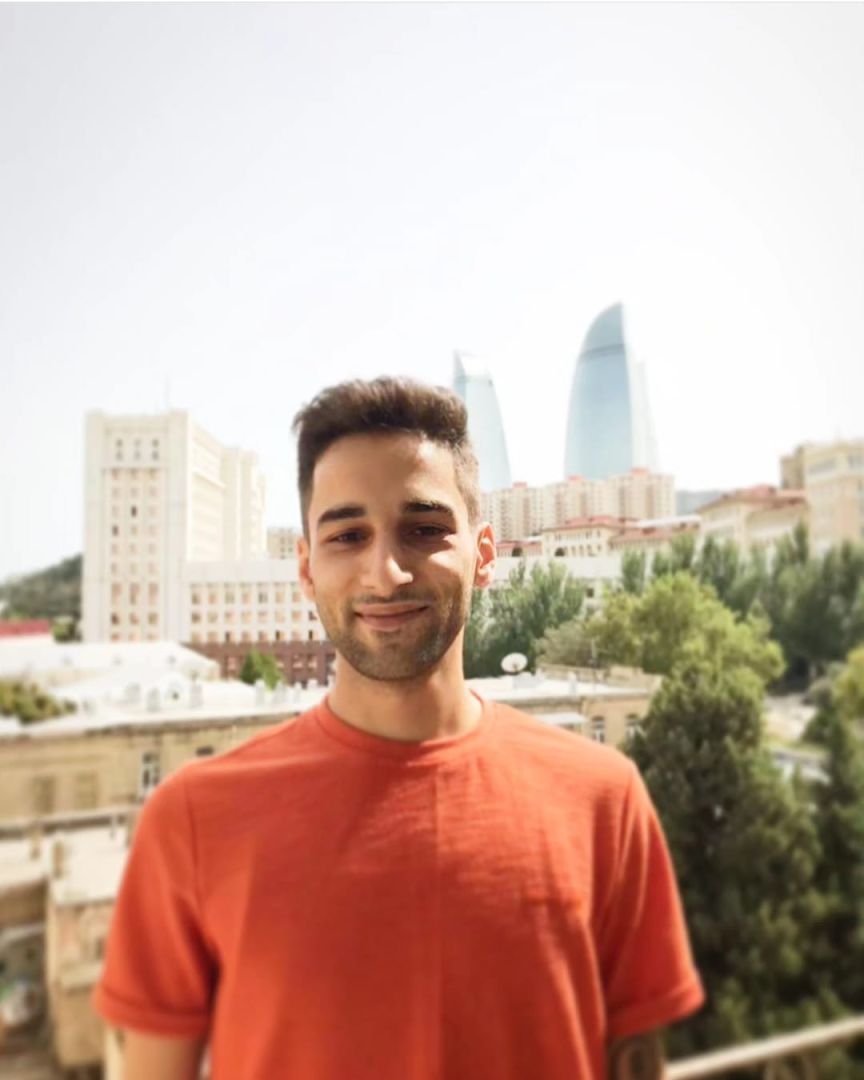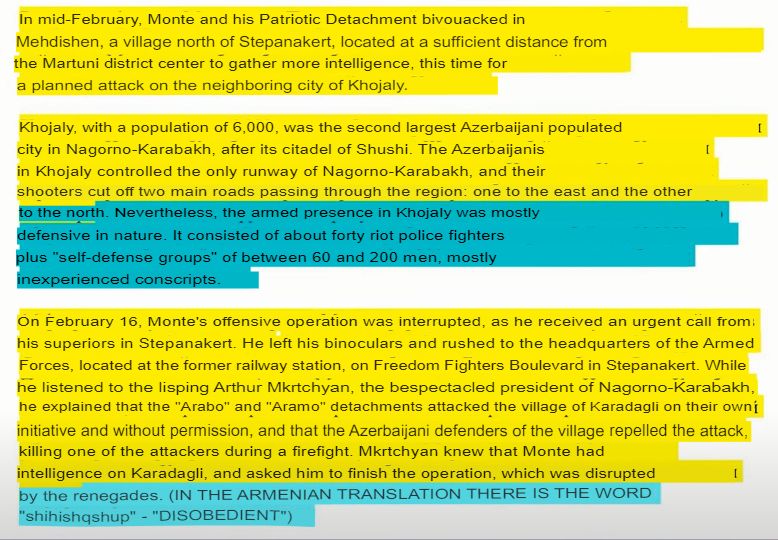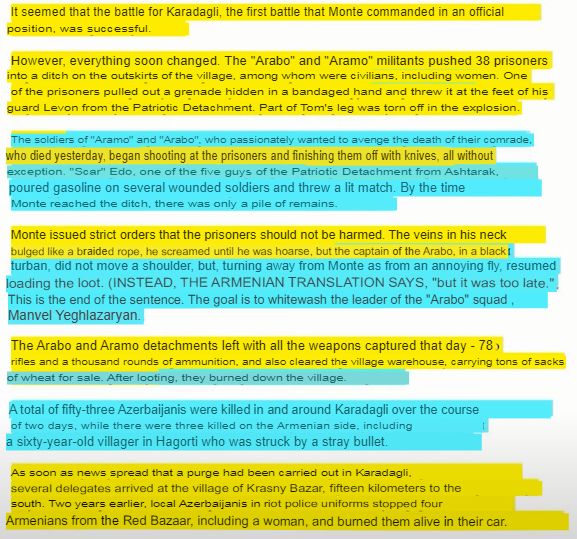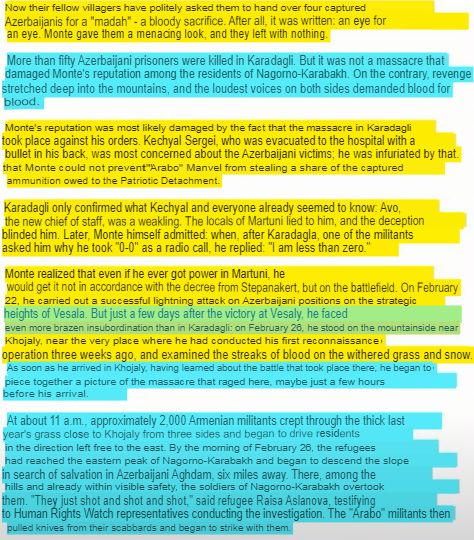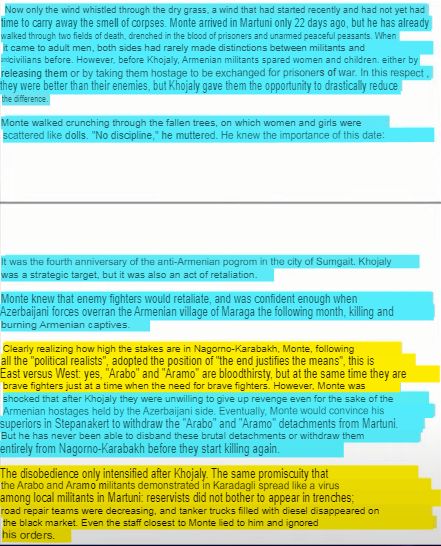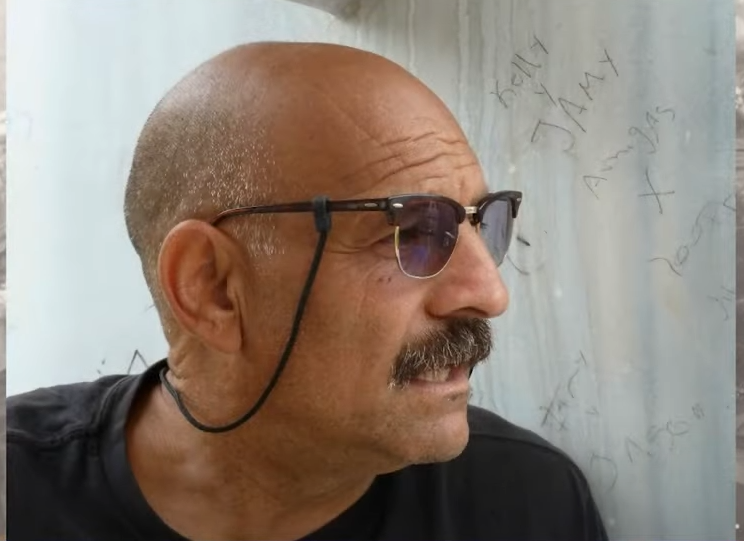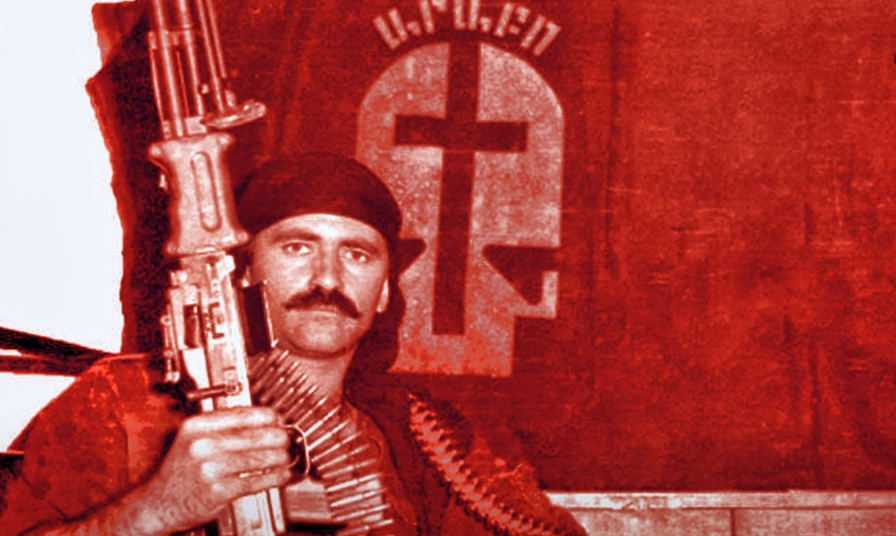Arabo and Aramo: How Armenians conceal truth about Khojaly [PHOTOS]
![Arabo and Aramo: How Armenians conceal truth about Khojaly [PHOTOS]](https://www.azernews.az/media/2024/02/26/ubiyca1.png)
It has been 32 years since the Khojaly tragedy, which left a scar in the memory of the Azerbaijani and Turkic nations. On the night from February 25 to 26, 1992, Armenian vandals massacred the inhabitants of several settlements including Karkijahan, Meshali, Malibayli, Gushchular, Garadaghli, and a number of others, where the inhabitants of Khojaly suffered the heaviest losses.
On this 32nd anniversary of the tragedy, the Azerbaijani people remember with deep respect and honor the memory of the innocent victims of ethnic hatred and genocide committed by Armenia.
The town of Khojaly, which was under siege and where land communication as well as power supply was cut off from October 1991 and January 1992, was occupied by the Armenian armed forces with the assistance of the 366th Motorized Rifle Regiment of the former USSR after a massive artillery bombardment.
As a result of the occupation, 613 people were brutally killed, including 63 children, 106 women, 70 elderly citizens, 8 families were completely destroyed, 130 children lost one of their parents, and 25 children lost both parents. The fate of 150 people, including 68 women and 26 children out of 1275 people, who were taken captive and hostage, as well as subjected to cruel torture, is still unknown.
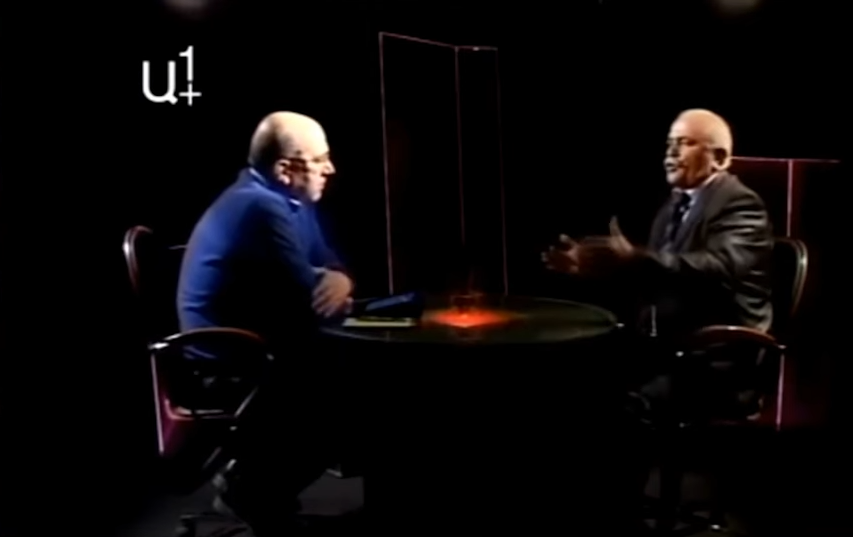
Let us remind the world community about the Armenian murderer and butcher who has not yet had his trial. It is surprising that Armenians, who claim to be a Christian nation, have not expressed their condolences to the Azerbaijani people, have not recognized their guilt and their ancestors, and do not know what they have done and what it has led to. After all, as it is stated in the sacred scriptures, the prophet Jesus proclaimed: "You have heard that it was said, 'Love your neighbor and hate your enemy.' But I say to you, love your enemies, bless those who curse you, do good to those who hate you, and pray for those who spitefully use you and persecute you," (Matthew 5:43-44).
Unlike the Armenian civilians who left Garabagh peacefully and without bloodshed after the liberation of Garabagh by the Azerbaijani army from terrorists, the Azerbaijani residents were met by murderers.
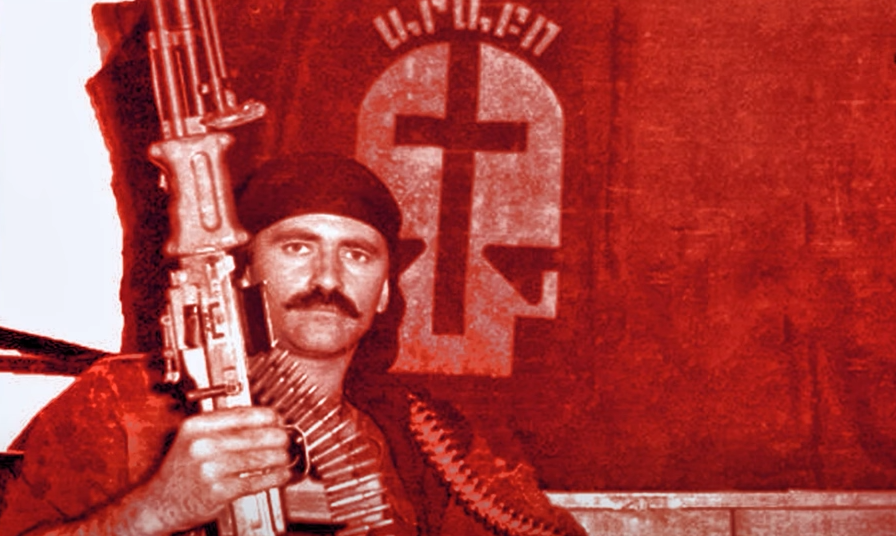
I would like to remind about the leader of the terrorist gang "Rabo" Manvel Yeghiazaryan, who was brutalized that night in 1992 in Garadagli, Khojaly. Many years later, in an interview on Armenian television, the TV host asked Manvel a question:
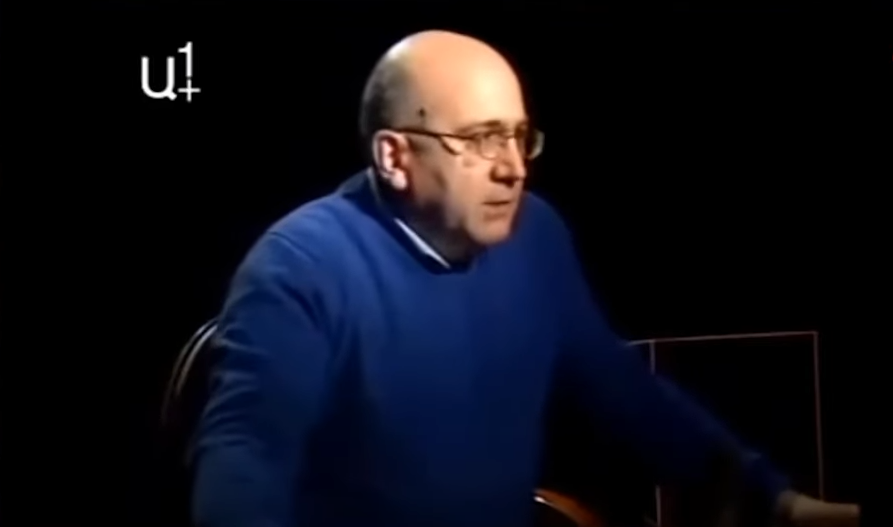
"Azerbaijani propaganda lately and every year, does not skimp on words and talks about such atrocities of Armenians, and every year they luxuriously celebrate the genocide of Khojaly. As a participant of those events, so to speak, as an eyewitness, what do you say about it?" said the TV presenter.
The head of "Arabo" gang Manvel Yeghiazaryan answers the anchor:
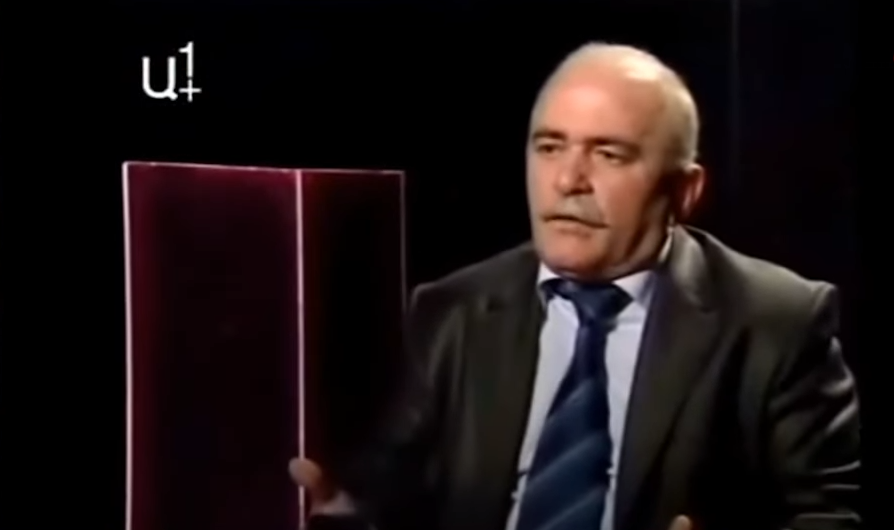
"I will tell you as an eyewitness that Monte Melkonian was my fighting comrade, he could not solve issues in either Garadaghli or Khojaly in 1992, and he did not even hold any position. So his brother Markar Melkonyan wrote a book in America, and our Armenians must have helped him, that after a fierce attack the "Arabo" detachment entered Garadaghli and started stabbing people with knives, in Khojaly they cut them, skinned them alive. Brother, when you write this, is the writer Armenian or Azerbaijani? This is Monte Melkonian's brother, Markar Melkonian.
Turks and Azerbaijanis attacked us on all their websites that "Rabo" squad are thugs, (And especially your name was discussed-says the presenter to him), yes they talk about "Arabo", open Azerbaijani websites and read. And now I ask this man (Markar M.) brother why do you write such things?
If you wanted to glorify your brother Monte, I could have done it much better, I was his friend, but it does not mean that you can say things about people that did not really happen. In Garadagli, the youngest woman was 75 years old, what women, what children is he writing about? They were not there, he writes shameful things about us (Armenians), why is that? Because there is no control. Look how much Azerbaijanis spend on propaganda? But ours don't." said the gang leader.
So, the leader of this gang "Arabo" Manvel Yeghiazaryan, who brutalized Azerbaijani residents in 1992 in Garadaghli, Khojaly, makes a statement against Markar Melkonian, brother of Monte Melkonian, whom he said was his comrade-in-arms, for the book that Markar Melkonian published and wrote in America, it is a biography of Monte Melkonian, where the book is called "My Brother's Way", the book is in English , and the translation from the original into Armenian that came out later, pay attention to the differences in the text of the original and the distortions in them. Even the author reproaches Armenians for helping Markar in writing this book, and he does not agree with the fact that "Arabo" entered Garadagli, cut people with knives, and that people were skinned alive, he reproaches him for this, and the TV presenter can't understand whether an Azerbaijani or an Armenian wrote the book (allegedly an Armenian can't write such a book) and to the presenter's surprise it was Monte's brother, Markar Melonian, that is an Armenian, and Manvel came to the conclusion that there is no control over what is written, that Azerbaijanis and Turks use it.
On the opposite, there was control when the book was translated from the original in English into Armenian in Yerevan for local readers, where many places were distorted and omitted intentionally.
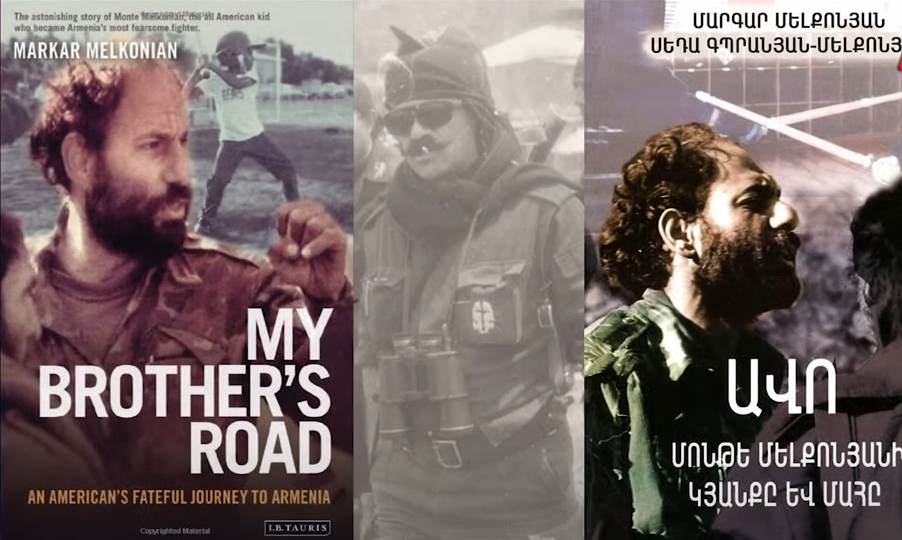
In the photos below there are examples of texts where the things that were included in the Armenian text are marked in yellow color, and the things that are marked in blue color were taken out of context intentionally.
Here is an excerpt from the test:
"In mid-February, Monte and his Patriotic Squad bivouacked in Mehdishen, a village north of Stepanakert (Khankandi) located a fair distance from the district center of Martuni, to gather more intelligence, this time for a planned attack on the neighboring town of Khojaly. Khojaly, with a population of 6,000 was Azerbaijan's second largest Azerbaijani populated town in Nagorno-Karabakh, after its citadel of Shusha. The Azerbaijanis in Khojaly controlled Nagorno-Karabakh's only airstrip, and their arrows cut off the two main roads through the region-one to the east and the other to the north." (what went into the text)
"Nevertheless, the armed presence in Khojaly was for the most part defensive in nature. It consisted of approximately 40 OMON fighters plus "self-defense groups" of between 60-200 men, mostly inexperienced recruits." (that was cut from the text when translating into Armenian)
On February 16, Monte's offensive operation was interrupted because he received an urgent call from his superiors in Stepanakert (Khankandi). He left his binoculars and rushed to the Armed Forces headquarters, located at the former train station on Stepanakert (Khankandi) Freedom Fighters Boulevard. While he listened to the chirpy Arthur Mkrtchyan, the bespectacled president of Nagorno Garabagh, he explained that the Arabo and Aramo units had attacked the village of Garadaghli, on their own initiative and without authorization, and that the Azerbaijani defenders of the village had repelled the attack, killing one of the attackers during a firefight.
Mkrtchyan knew that Monte had intelligence on Garadaghli, and asked that he finish the operation, which was thwarted by the renegats. (In the Armenian translation, the word is "rebellious".
The Armenians knew that they would have to translate the book in their own way, cut out important information from the text, so that in the future generations of Armenians would consider the murderers of women and children and the elderly as heroes.
This year, for the first time, on the 32nd anniversary of the Khojaly genocide, Azerbaijan tricolor flag flies over all territories of Azerbaijan, including the city of Khojaly, which is a heartbreak and an incurable wound for every Azerbaijani.
The liberation of Khojaly symbolizes Azerbaijan strength and solidarity, being a bond of loyalty to the victims of the Khojaly genocide.
---
Abbas Ganbay is AzerNews’ staff journalist, follow him on Twitter: @Noend33
Follow us on Twitter @AzerNewsAz
Here we are to serve you with news right now. It does not cost much, but worth your attention.
Choose to support open, independent, quality journalism and subscribe on a monthly basis.
By subscribing to our online newspaper, you can have full digital access to all news, analysis, and much more.
You can also follow AzerNEWS on Twitter @AzerNewsAz or Facebook @AzerNewsNewspaper
Thank you!

